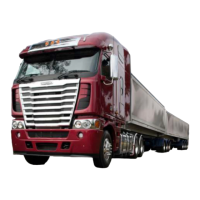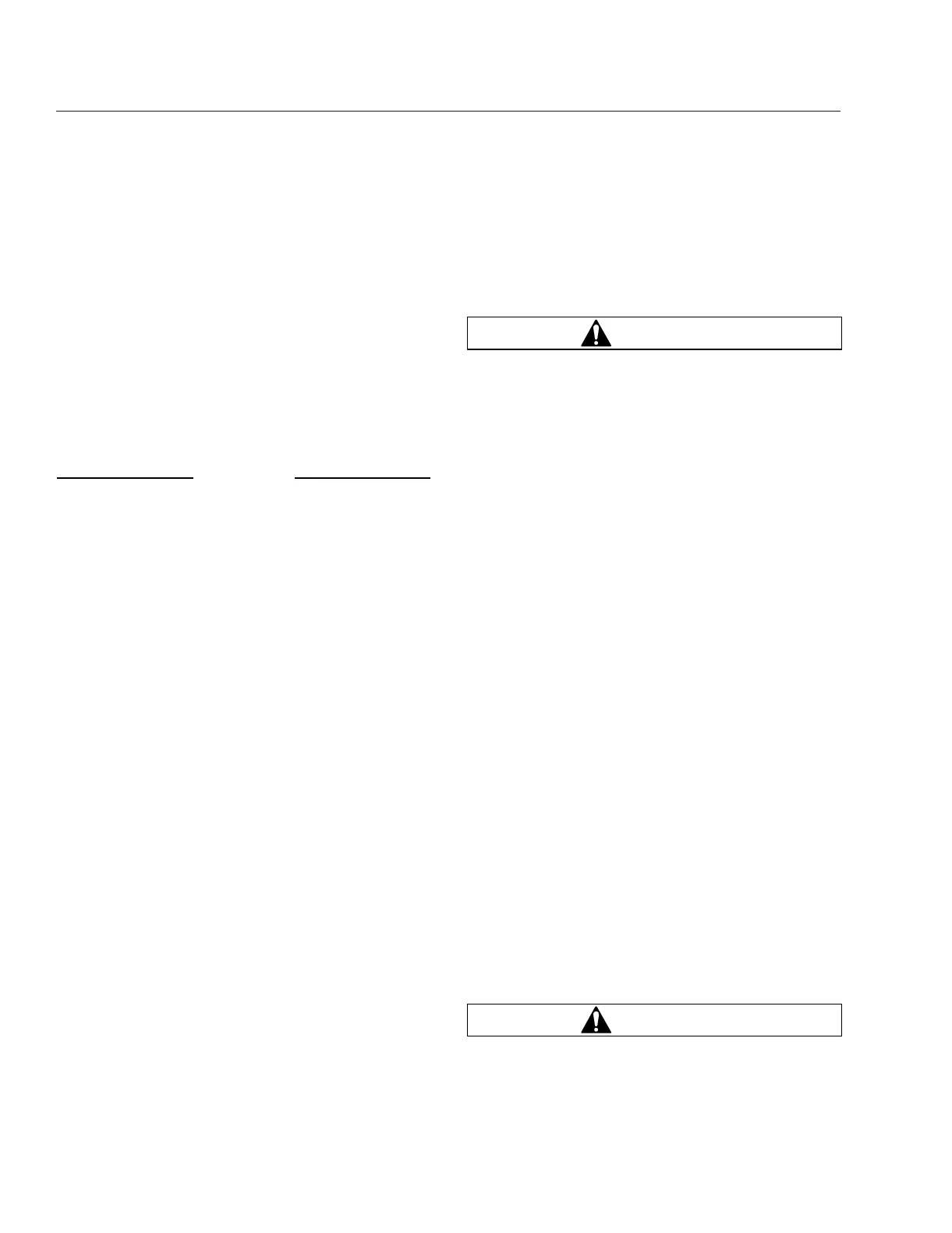Exhaust Aftertreatment
System, Optional
IMPORTANT: Depending upon local jurisdic-
tional emissions guidelines, the vehicle may not
be equipped with an emissions aftertreatment
system (ATS). Adequate maintenance of the en-
gine and the diesel particulate filter (DPF) are
the responsibility of the owner/operator, and are
essential to keep the emission levels low. Good
operating practices, regular maintenance, and
correct adjustments are factors that will help
keep emissions within the regulations.
NOTICE
It is extremely important that the following guide-
lines be followed for engines that are equipped
with an ATS, or damage may occur to the after-
treatment device, and the warranty may be com-
promised.
•
Use ultralow-sulfur diesel with 15 ppm sul-
fur content or less.
•
Do not use fuel blended with used engine
lube oil or kerosene.
•
Use only engine lube oil with a sulfated ash
level less than 1.0 wt%.
IMPORTANT: See the engine manufacturer’s
operation manual for complete details and op-
eration of the ATS.
The ATS varies according to engine manufacturer
and vehicle configuration, but the exhaust muffler is
replaced by an aftertreatment device (ATD). Inside
the ATD, the exhaust first passes over the diesel oxi-
dation catalyst (DOC), then passes through the die-
sel particulate filter (DPF), which traps soot particles.
The soot is reduced to ash during a process called
regeneration (regen).
Regeneration
The harder an engine works, the better it disposes of
soot. If the exhaust temperature is high enough, a
process called passive regeneration (regen) occurs
as the vehicle is driven normally. However, if the en-
gine isn’t running hot enough, the electronic controls
may initiate an active regen, whereby extra fuel is
injected into the exhaust stream to elevate filter tem-
peratures and reduce the soot trapped in the DPF to
ash. Active regen happens only when the vehicle is
moving above a certain speed, determined by the
engine manufacturer. See your engine operation
manual for complete details. Both active and passive
regen happen automatically, without driver input.
WARNING
Active regeneration can occur automatically any-
time the vehicle is moving. The exhaust gas tem-
perature could reach 1500°F (800°C), which is hot
enough to cause a fire, heat damage to objects
or materials, or personal injury to persons near
the exhaust outlet. The exhaust temperature can
remain high even after the vehicle has stopped.
When stopping the vehicle shortly after an auto-
matic regen, ensure the exhaust outlets are di-
rected away from structures, trees, vegetation,
flammable materials, and anything else that may
be damaged or injured by exposure to high heat.
See Regen Switches, below, for instructions on
preventing automatic regen if necessary.
When operating conditions do not allow for ATD filter
cleaning by active or passive regen, the vehicle may
require a driver-activated parked regen. When this
occurs, the DPF lamp illuminates, indicating that a
regen is required. The driver must either bring the
vehicle up to highway speed to increase the load
(thus starting an active regen), or park the vehicle
and initiate a parked regen. See Regen Switches,
below, for instructions on initiating a parked regen.
Regen Switches
The regen request switch, located on the dash, is
used to initiate a parked regen. See Fig. 11.1.
Some vehicles may be equipped with a regen
request/inhibit switch. See
Fig. 11.1. To stop a regen
in progress or prevent the start of a regen, press the
lower half of the switch. Regen will be delayed until
the switch is no longer active.
NOTE: The regen switch can initiate a parked
regen only when the DPF lamp is illuminated.
WARNING
During parked regen, exhaust temperatures are
very high and could cause a fire, heat damage to
Emissions Reduction Components
11.1

